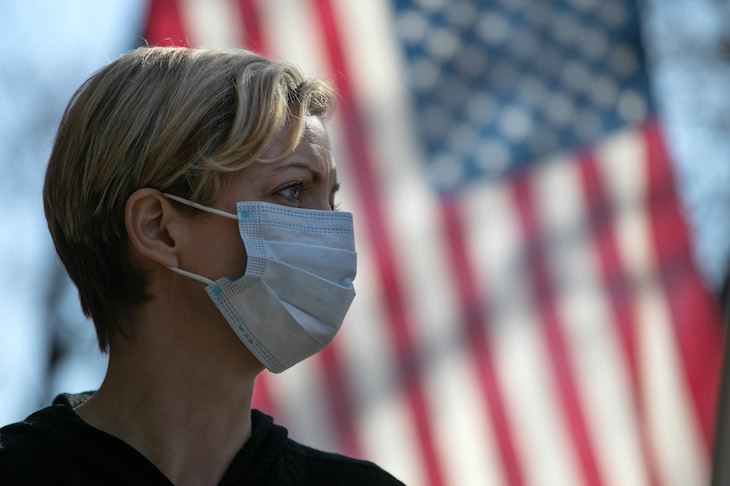Have we been vastly underestimating the number of people who have been infected with COVID-19 and correspondingly overestimating its mortality? No one knows because we don’t know just how widespread this infection is in the population at large. But a leaked document from the Department of Homeland Security suggests that the government, at least, is working on the assumption that the virus is a lot harder to contain — but a lot less deadly — than is widely assumed.
The document compares the likely outcome of two scenarios: one in which the outbreak is ‘unmitigated’ — i.e. life carries on as normal — and one in which the government imposes a 30-day ‘shelter in place’ order followed by further mitigation measures. In the first scenario, it concludes that 195 million people – i.e. over half the US population — would become infected and 300,000 people would die. If that sounds frightening, then look at the mitigation scenario. In that case, believes the Department of Homeland Security, 160 million people would become infected and 200,000 would die. In other words, the kind of lockdown measures being employed in the US and around the world could help to cut the death toll by a third, but would only cut the number of infections by around a sixth.
More remarkably still is the mortality rate that these figures imply. In the unmitigated scenario, the mortality rate would be 0.15 percent and in the mitigated scenario, it would be 0.125 percent. This is far lower than has been suggested elsewhere. Imperial College London, for example, first estimated the mortality rate at 0.9 percent and has more recently revised that down to 0.66 percent. (The 3.2 percent figure that the World Health Organization foolishly put out in early March can be dismissed — it was a simple division of reported deaths by reported cases, ignoring the large number of mild cases which have gone unreported). The US figures would put COVID-19 much in the same bracket as ordinary seasonal flu — whose mortality rate is around 0.1 percent and which the Centers for Disease Control estimates kills between 290,000 and 650,000 globally every year.
It is not clear how the Department for Homeland Security calculated its figures, only that it came from their data and analytics team and that the document is marked ‘for official use only’. But it opens up a new side to the debate over the lockdown, which President Trump has been very keen to lift and Dr Anthony Fauci has been adamant must stay in place. If lockdown is only going to reduce the numbers of infections by a sixth, then why are we destroying the economy in order to impose it?
***
Get three months’ free access to The Spectator USA website —
then just $3.99/month. Subscribe here
***
The Department for Homeland Security document suggests that the real impetus for lockdown was not to try to stop people catching the virus but to slow it down sufficiently in order not to exceed the US’s supply of ventilators. In the unmitigated scenario, it suggests that the US could, in a worst-case scenario, have a peak need of over 400,000 ventilators. In the mitigated scenario, this would fall to a peak need of just over 100,000. The risk of a shortage of ventilators explains why in the unmitigated scenario the death rate from COVID-19 would be higher than in the mitigated scenario.
But then given that half the people put on ventilators seem to be dying, and many intensive care doctors are beginning to question whether the devices are being overused, it does beg the question of whether ventilator supply should be allowed drive policy in the way it has.
Interestingly the New York Times got hold of the leaked document and ran a story on it last week, but used it instead to rubbish Donald Trump’s claim that COVID-19 could end up costing less than 100,000 lives. It missed the real story: that the US government’s own modeling suggests COVID-19 is far more virulent — and less deadly — than is widely believed by the Imperial team that is driving UK policy.
This article was originally published on The Spectator’s UK website.


















